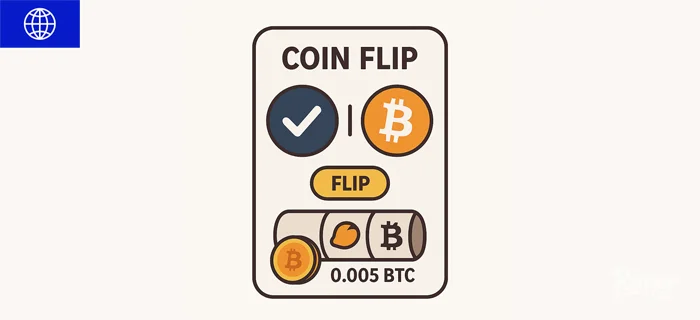Crypto gambling is here, where the games are not in the form of roulette tables or electronic slots. Instead, they rely on public algorithms that compute results in seconds, with no steps taken on traditional platforms.
Table of contents
Why Gen Z is driving the crypto gaming boom
The new generation, Gen Z, likes such systems. The ones that give instant responses. The faster the process, the more likely they are to engage.
No-KYC sign-up ?, instant cash-out ?, provably fair technology ?, and complete decentralisation mean that crypto casinos provide the type of speed, anonymity, and freedom that is exactly what's required for a generation raised by the web. (source: https://coinpoker.com/crypto-casino/uk/)
Moreover, this system does not only make the access possible, but also impacts the game design. Knowing how crypto-native mechanics function is the main reason this generation is so reactive to them.
What makes a game ‘crypto-native’?
In contrast to traditional games, crypto-native games do not depend on existing tables or dealer algorithms. Rather, they are run on open code that computes results based on public information. This type of operation does not need internal checks and balances.
With these games, all the results can be traced back to a cryptographic seed. The players can view the logic of the result before a round and check the result once more after the round has ended. There is no reliance on trust, but only on the principles and integrity of the mathematics.
This is a format familiar to young players. A third of the Gen Z population starts investing in early adulthood, according to a Financial Times 2025 survey in which 41% turn to social media for money information.
A move consistent with their receptiveness to new digital forms and means, which puts the figures in front of them first. Crypto-native games employ the same format:
- simple reasoning
- no human intervention
- direct access
Consequently, the whole process turns instantaneous. Payouts are received without delay in processing. There are no forms, reviews, or ID requests. Only the structure remains lean end-to-end.
Bustabit: where it all took off
The pioneer crash game, Bustabit, established the template that others would emulate. Its premise is a growing multiplier that may collapse at any time. Players attempt to withdraw funds before the figure dwindles to zero.
What distinguished Bustabit was not so much the mechanics. Every round could be verified by the player, not the house. Its code remains in the public domain, and the outcome of every game remains open to audit.

That openness was unusual in an era when proprietary systems were the norm for most online gambling. To users who were raised reading charts and seeing interfaces, Bustabit's sparse approach seemed natural.
Much of its success was its community. Chatrooms, leaderboards, and shared statistics made it more than just a bet. It was where information and decision-making went hand-in-hand.
Crash games: betting on the brink
Where Bustabit defined the underlying mechanic, Crash games were elevated to the status of a full-fledged genre when other platforms began employing the matrix. All the incarnations share the same risk profile: a rising multiplier that can fall to zero at any moment.
That is where the variety comes in: speed, configuration, and how players approach the choice to play on or to quit.
Unlike slots or roulette, this mechanic provides the player with full agency over when to act. The tension isn't from tension that has been built up in the background. It's from seeing the multiplier climb in front of you, knowing it can stop at any time.
Keeping the number close and deciding when to cash out creates a rhythm not based on luck.
? That tension between risk and timing is what makes the experience.
In the majority of cases, the cash-out feature becomes available. Players enter rounds in batches, sometimes in live lobbies with bets and results visible. That public setting adds a social element that's not typical for isolated formats.
It also helps fuel Crash's quick popularity among Gen Z. The structure lends itself particularly to short videos and live streams, both of which are sources of online casino marketing.
When bets are openly placed and results are clearly indicated on screen within seconds, viewers grasp the mechanism without narration.
? Transparency, combined with open entry, keeps this form of play at the forefront of crypto gaming development.
Plinko and the power of controlled chaos
Plinko started life as a game show prop but got a second lease of life at crypto casinos. The board remains the same: a grid of pins, a falling object, and a row of reward slots at the bottom. The only change is the way players interact with it.
In crypto usage, the user dictates how many rows to enable, which adjusts the reward system. Narrow rows produce tighter ranges; wide rows produce wider possible results. The interface is still minimalist, but the risk can be adjusted with a single entry.
That combination of visual feedback and odds variation appeals to customers who enjoy playing without lengthy instructions. No memorisation of odds or chasing bonus features. The game initialises immediately and runs for seconds.
Others do it for the rhythm, others for the control that they cannot achieve on spinning reels. Even where outcomes are mixed, the mechanism is the same. No waiting around, no secret ritual – just a swift, open drop and a result that appears to have been earned.
Coin flip, dice, and the rise of micro-wagers
Crypto gaming should not be about moving images or multiplayer platforms. In some games, it all takes place in a step. The user makes a choice – heads or tails, even or odd – and receives the outcome instantly. No instructions, no pause, no visual wait.
These formats are loved by users who are already used to moving money fast. There's nothing to set up, and every round closes in seconds. Small wagers, clear results, and full control make these games easy to enter and hard to interrupt.
This aligns with what Gen Z already does with cryptocurrency. That is, of all the buyers of cryptocurrency in 2024, 94% were either Gen Z or millennials, based on a 2025 Gen Z investment trends and statistics report.

Gen Z itself represented 17.4% and spent, on average, $6,120. That is, the new generation is already used to sending, risking, and monitoring value through mechanisms which do not inhibit them.
The same tendencies are evident when they choose games to play. The audience drawn to mobile games is not readily drawn toward long play sessions or sophisticated mechanics. They want outcomes they can read, test, and repeat, without being told what to do next.
Conclusion
Games like Bustabit, Crash, and Plinko weren't rebooted from their original forms.
? They were designed for blockchain in the first place, and doing so, they differ both in terms of form and purpose.
The spaces they run on prioritise openness and access, and not appearance or narrative.
Gen Z keeps on reacting to this style because it is how they already manage money, make choices, and behave on the internet.
As crypto tools get better, these games are going to stay current, not by taking things from the past, but by becoming more efficient in their reasoning.





